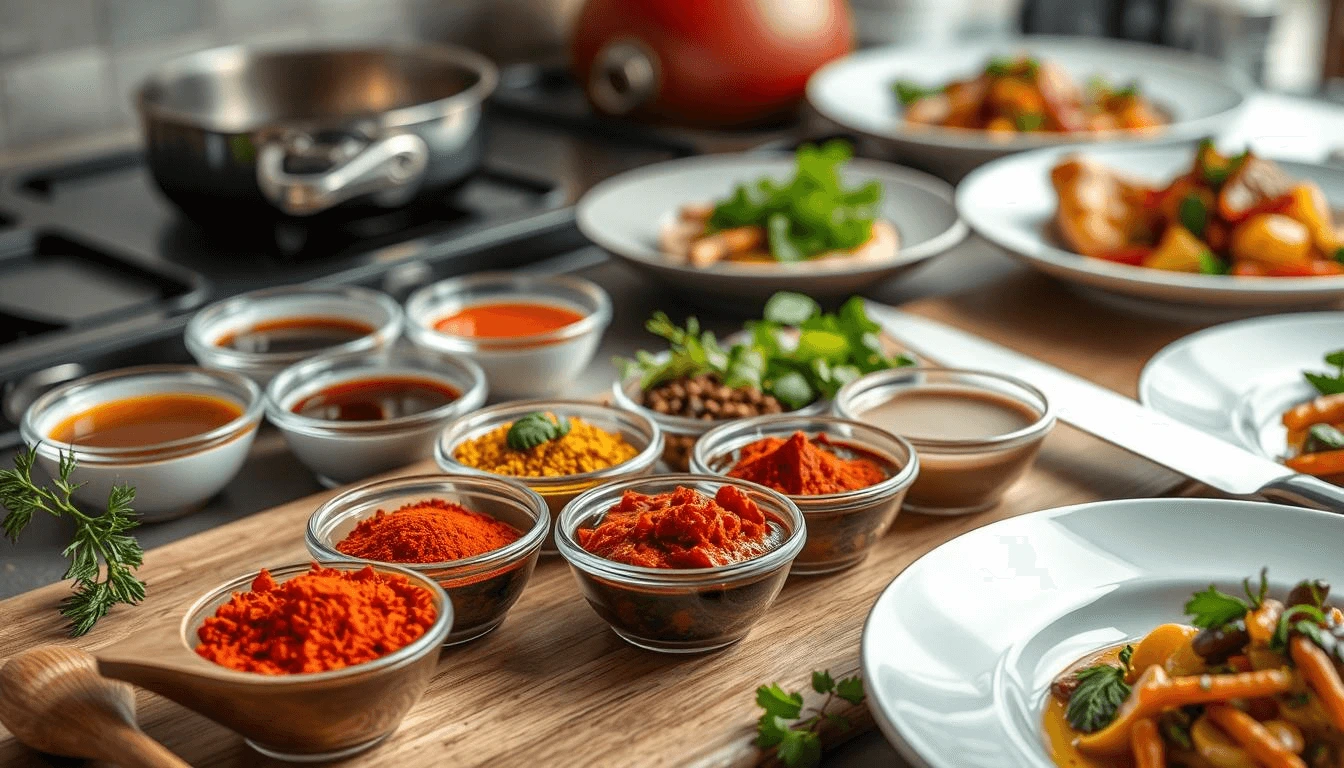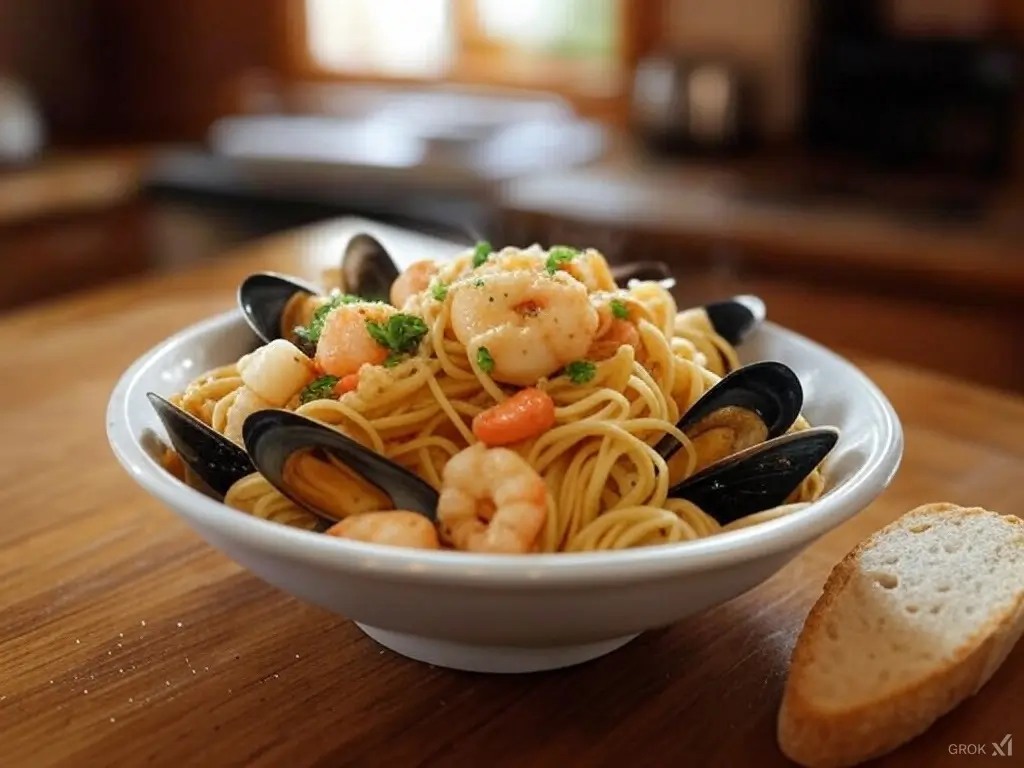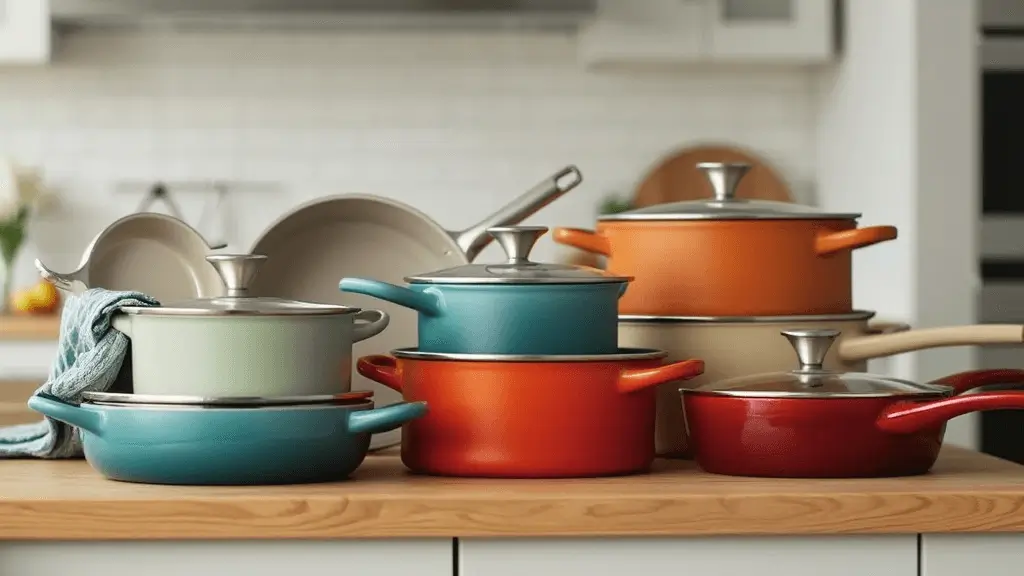If you’ve ever wondered how to taste-test meals like a professional chef, you’re in the right place. This guide will walk you through essential techniques for balancing flavors, adjusting seasonings, and ensuring every bite is perfect.
Effective taste testing can make your cooking stand out. Knowing the basics and how to use them in your kitchen will improve your recipes. This leads to unforgettable meals.
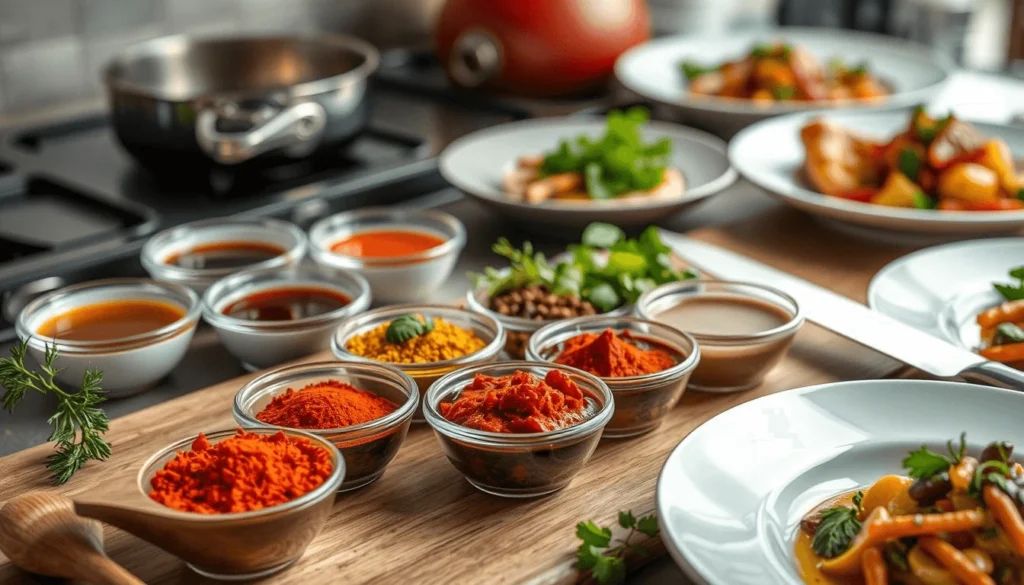
With time and effort, you can get better at tasting and balancing flavors. This skill will help you make meals that are truly special. Focus on taste testing and culinary skills to elevate your cooking.
Understanding the Five Basic Tastes
Flavor profiling starts with knowing the five basic tastes. These are sweet, salty, sour, bitter, and umami. They are key to making tasty meals. By learning these tastes, you can make dishes that taste great together.
To get flavors right, balance these five tastes. Sweetness makes dishes richer. Saltiness brings out flavors and textures. Sourness adds a zing, cutting through heavy tastes.
Bitterness adds a complex touch. Umami brings depth and richness. Knowing how to mix these tastes makes your dishes balanced and tasty.
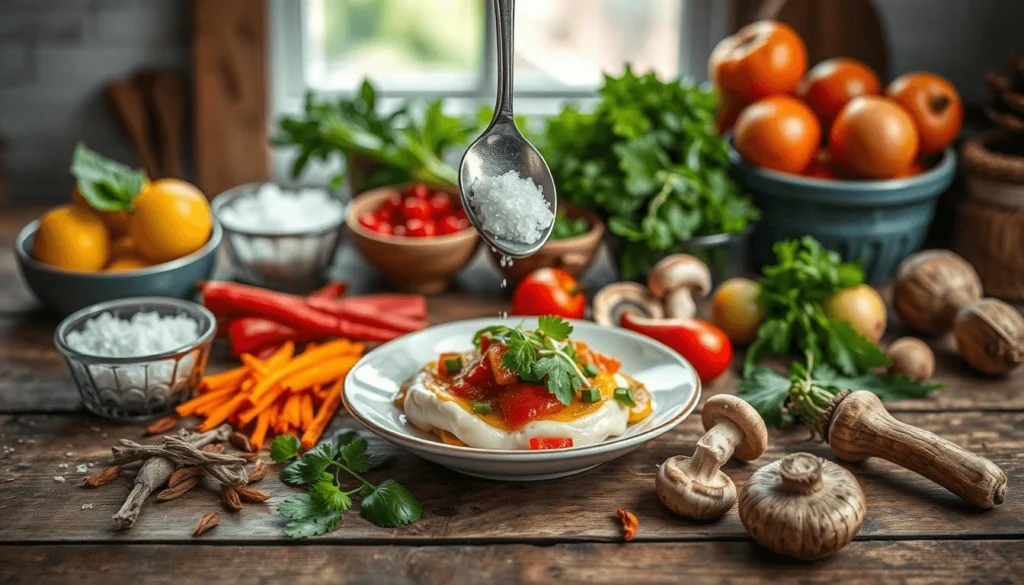
- Sweet: adds richness and depth
- Salty: enhances flavors and textures
- Sour: adds brightness and acidity
- Bitter: provides sophistication and complexity
- Umami: adds depth and richness
Mastering the five basic tastes improves your cooking. It’s important for both chefs and home cooks. Knowing how to balance these tastes makes your meals delicious and shows off your skills.
The Professional Approach to How to Taste-Test Meals
Learning to taste-test meals is key for anyone serious about cooking. Professional chefs know that tasting is a must for making tasty and good-looking dishes. By taking a professional approach, you can improve your cooking skills and make great meals.
In cooking, attention to detail is very important. This means knowing how to mix flavors, use spices, and make dishes look good. A pro at taste testing thinks about the flavors and textures, making sure everything works well together.
Some important things to think about when taste testing include:
- Knowing the taste of each ingredient
- Seeing how flavors mix and balance
- Adding spices to improve flavors
- Making dishes look good to enhance the meal
By being professional in taste testing, you can get better at cooking. This skill is vital, whether you’re cooking for yourself or others. It’s what makes a meal special and enjoyable.
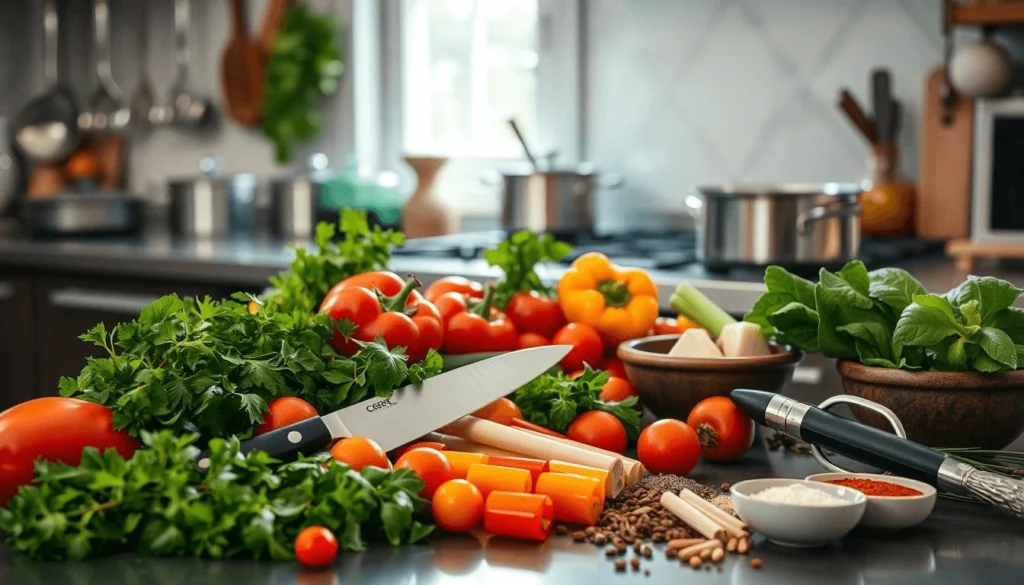
Mastering the Art of Palate Cleansing
Palate cleansing is key in meal preparation. It can make or break your dining experience. By using the right techniques, you can enhance your culinary skills and enjoy each dish more.
Choosing the right palate cleanser is crucial. It could be a glass of water or a neutral-tasting cracker. The goal is to pick something that won’t clash with the flavors of the dishes you’re about to taste. Timing is also important, so you taste each dish at its best.
Choosing the Right Palate Cleanser
- Water: a classic choice for palate cleansing
- Neutral-tasting crackers: ideal for resetting your taste buds
- Sorbet: a refreshing option for cleansing your palate between rich dishes
Mastering palate cleansing lets you fully enjoy each dish. It’s great for both professional chefs and home cooks. Adding palate cleansing to your meal prep can elevate your cooking skills.
Essential Tools and Techniques for Flavor Analysis
For flavor analysis, the right tools and techniques are key. You need to know how to use flavor wheels and charts. These tools help you spot and balance flavors. With practice, you’ll analyze flavors with ease and make tasty, balanced meals. Food pairing is also important, as it’s about mixing ingredients for great flavors.
To get better at taste testing, try tasting many foods. Notice their flavors. Use a flavor wheel to find out the sweet, salty, sour, bitter, and umami in them. This skill will help you cook with balanced flavors.
- Identifying flavor profiles: This involves tasting a food and identifying its individual flavor components.
- Balancing flavors: This involves combining different ingredients to create a balanced flavor profile.
- Pairing foods: This involves combining different foods to create harmonious flavors.
Mastering these techniques and using tools like flavor wheels will elevate your cooking. You’ll make delicious, well-balanced meals.
Understanding Flavor Profiles and Combinations
Creating tasty meals means knowing about flavor profiles and how to mix them. It’s about tasting each ingredient to see how they work together. This skill helps make dishes that are both complex and pleasing to eat.
To mix flavors well, think about layering. This means adding different flavors to a dish, like using a rich sauce over meat. This adds depth and makes the dish more interesting. By understanding flavor profiles and tasting, you can find the perfect mix for a great meal.
Building Complementary Flavors
- Identify the unique characteristics of each ingredient
- Use taste testing techniques to determine how ingredients interact
- Layer flavors to add depth and complexity to a dish
Identifying Flavor Imbalances
Flavor imbalances happen when one flavor is too strong. To fix this, taste the dish and adjust the seasoning. This way, you can balance the flavors and make a meal that’s both tasty and well-rounded.
Creating Depth Through Layering
Layering flavors is key to making a dish rich and complex. Techniques like reduction and infusion help add layers of taste. With practice in flavor profiling and tasting, you can make meals that are truly outstanding.
Common Taste-Testing Mistakes to Avoid
When taste testing, many common mistakes can impact your culinary skills. To make tasty and balanced meals, knowing these mistakes is key. One big mistake is over-seasoning, which can overwhelm other flavors and mess up the dish’s taste.
Another important thing is the dish’s temperature. It can change how flavors and textures come together. Serving a dish at the wrong temperature can mess up its taste and texture. Also, the order you taste dishes in matters a lot. It affects how you experience the flavors and textures.
- Over-seasoning, which can overpower the other flavors in the dish
- Temperature errors, which can affect the flavors and textures
- Tasting order errors, which can impact the flavors and textures
By knowing these mistakes and avoiding them, you can improve your cooking skills. You’ll make meals that are not only tasty but also well-balanced, with great flavor profiling.
Mastering taste testing is key to improving your cooking skills. Knowing the five basic tastes helps you make dishes that taste great and are well-balanced. This article has shown you how to analyze flavors, spot imbalances, and tweak your recipes.
Taste testing takes time and effort. But with practice, you’ll make meals that wow everyone. Keep trying new flavors and trust your taste buds. This will help you become a skilled chef.
FAQ
What are the five basic tastes that are the foundation of flavor profiling?
The five basic tastes are sweet, salty, sour, bitter, and umami. These tastes are key to making meals tasty and balanced.
How can I choose the right palate cleanser for taste testing?
Picking the right palate cleanser is key. It should be neutral, like plain water, unsweetened tea, or a small piece of bread.
How do I avoid over-seasoning when taste testing?
Over-seasoning can ruin a dish. Taste it first, then add seasoning little by little. This way, you avoid overpowering the flavors.
How does temperature impact the taste of a dish?
Temperature greatly affects a dish’s taste and texture. Taste it at the right temperature for the best experience.
How can I build complementary flavors when taste testing?
To create great flavors, balance them well. Pair ingredients like sweet and sour, or salty and umami for a perfect taste.
What are some essential tools and techniques for flavor analysis?
For flavor analysis, use tools like flavor wheels and charts. Knowing how to identify and balance flavors is crucial for tasty meals.
How can I avoid tasting order errors when taste testing?
The order you taste dishes matters. Start with mild flavors and move to stronger ones. This helps you notice each flavor better.

